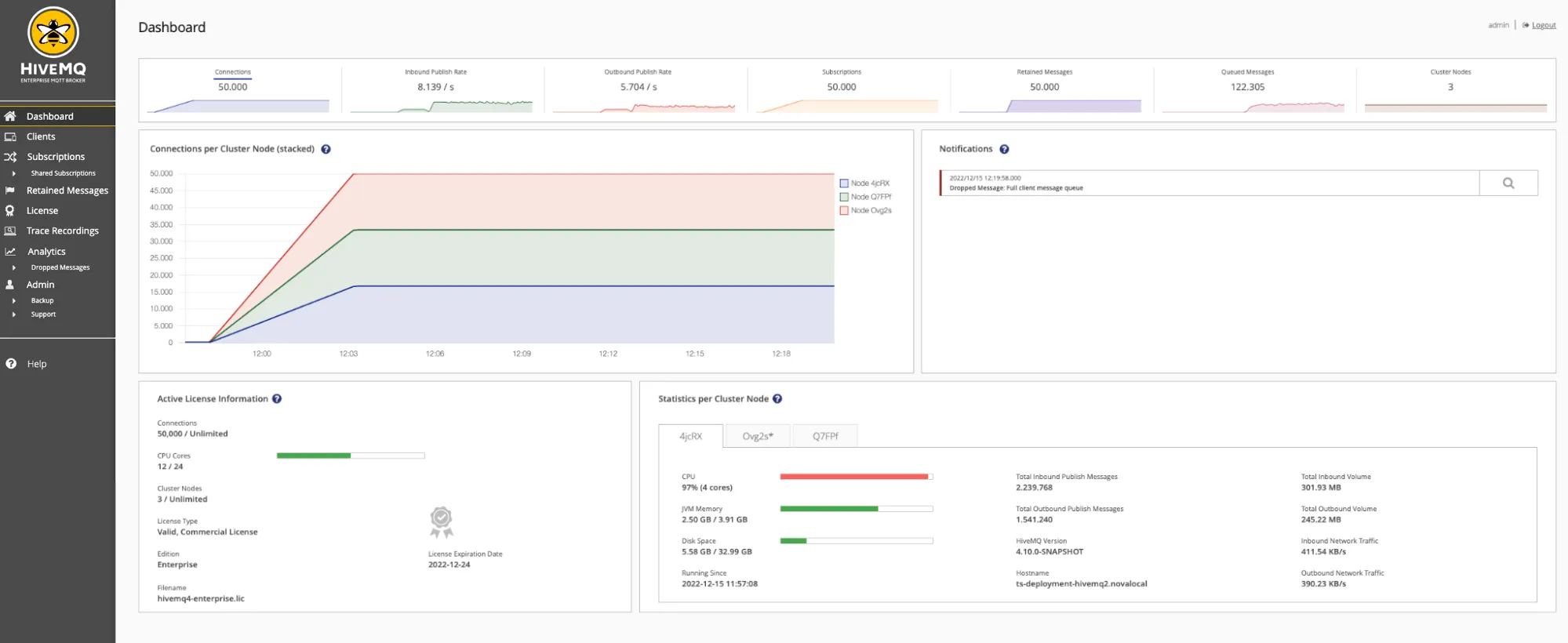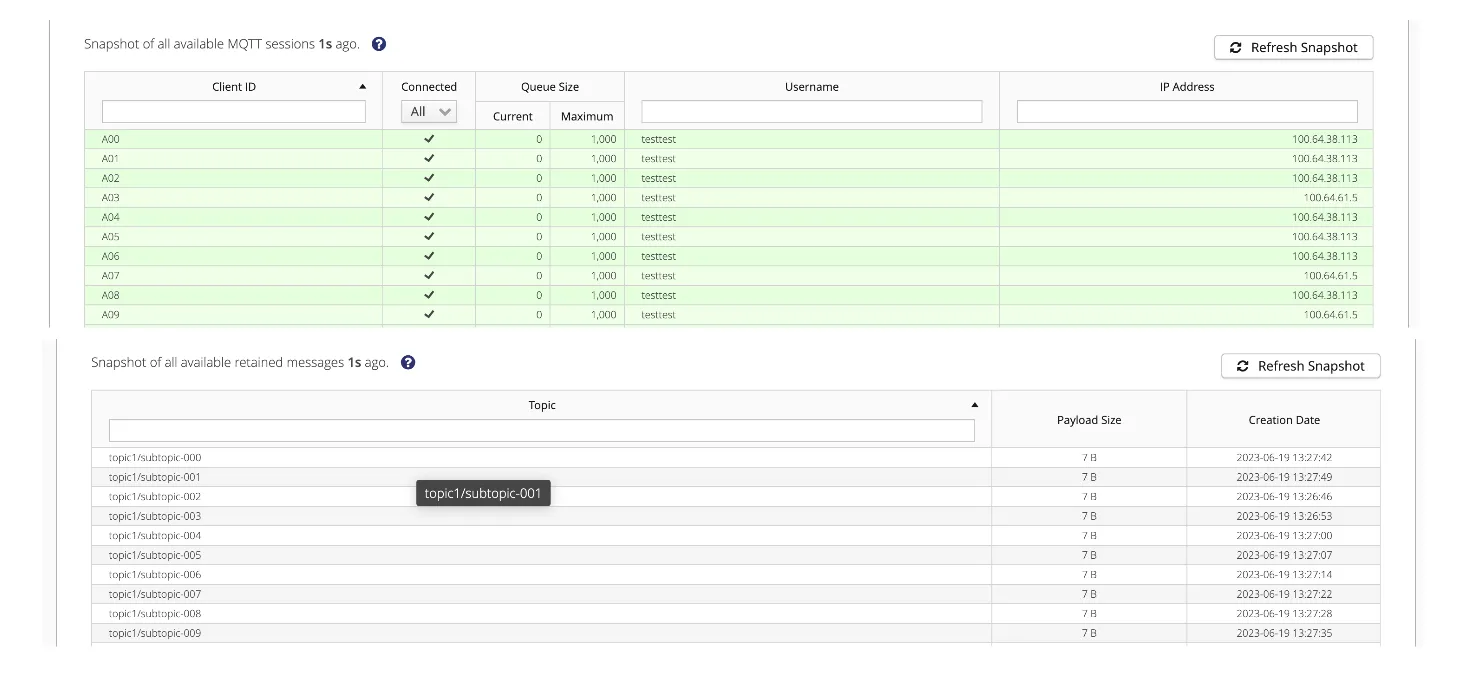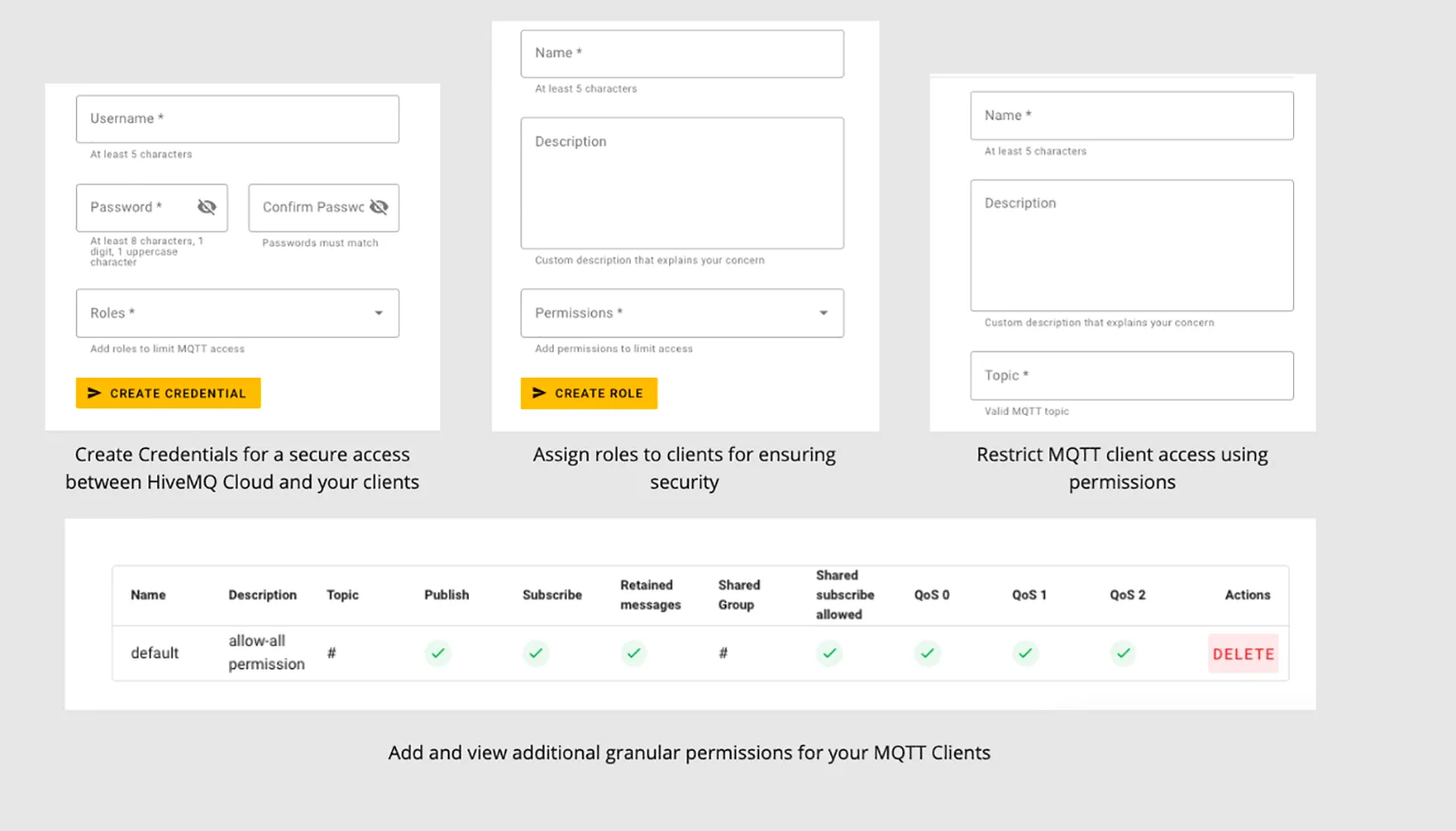HiveMQ Cloud: When Does It Make Sense to Move from Serverless to Starter?
HiveMQ Cloud is a fully-managed, cloud-native MQTT platform that allows you to run IoT applications, from proof-of-concept to production, anywhere, without worrying about setup, updates, or maintaining infrastructure. Using HiveMQ Cloud, developers can effortlessly begin building MQTT-based IoT applications.
Key Benefits of HiveMQ Cloud Fully-Managed MQTT Broker
Here is the list of top three benefits of using HiveMQ Cloud fully managed MQTT broker:
1.Fully-managed
IoT developers can focus on their core competency - building an IoT solution - without being distracted by the operational details of managing an MQTT infrastructure.
2.Automatic scaling
As the number of IoT devices and message volume increases, HiveMQ Cloud scales up efficiently to meet demands and ensure high availability and reliability.
3.Cost-effective
HiveMQ Cloud offers an hourly pricing model, which allows you to only pay for what you use and allocate more resources towards the development and enhancement of your IoT solution.
As a fully-managed service, HiveMQ Cloud presents significant advantages due to its extensive integrations and availability on major Cloud Service Providers (CSPs) such as Amazon Web Services (AWS) and Microsoft Azure. The advanced integrations offered with other cloud services enable seamless interoperability, ensuring a high level of efficiency and business process automation.
Furthermore, HiveMQ Cloud provides complete MQTT compliance, fully aligning with both 3.x and MQTT 5 versions of the standard. This makes it a fully MQTT Sparkplug compliant MQTT Broker.
HiveMQ Cloud assures end-to-end encryption, providing a secure channel for data transfer and effectively protecting information from being intercepted. With comprehensive device authentication and authorization measures in place, only verified devices can gain access and communicate through the platform, adding another layer of protection against unauthorized access. HiveMQ Cloud also offers secured public or private endpoints, which not only allows for flexible data access but also ensures data privacy and security. These robust security measures combine to provide a trustworthy and reliable platform for seamless and secure MQTT communication.
When to Upgrade From Serverless to Starter?
HiveMQ Cloud offers an array of plans, including Serverless, Starter, Professional, and Enterprise. At first glance, these plans might look similar, but there are clear differences in the ideal use cases and features. Here we’ll compare the Serverless and Starter plans to help you make an informed choice.
HiveMQ Cloud Serverless offers a basic yet fully MQTT-compliant broker designed for learning and experimenting. The Serverless plan offers a free tier, which allows up to 100 connections for free and many basic security and integration capabilities.
On the other hand, HiveMQ Cloud Starter is designed for early production needs. While it also offers a fully MQTT-compliant broker, each Cloud Starter Cluster has a dedicated broker unlike the multi-tenant offering of HiveMQ Serverless. Additionally, HiveMQ Cloud Starter offers unlimited connections and an hourly pricing model. Every new signup gets $100 worth free credits for their first Starter cluster.
Both options provide self-service capabilities, enabling you to deploy an MQTT broker service effortlessly with a few clicks. Once set up, all you need to do is direct your MQTT client applications towards HiveMQ Cloud and the rest is taken care of.
There is no need to select instance types, storage options, network optimizations, or the number of nodes. These plans offer elasticity to match any workload.
HiveMQ Cloud Serverless Vs. HiveMQ Cloud Starter
Now, let’s examine and compare the Serverless and Starter plans offered by HiveMQ Cloud across various features and benefits, including connection capability, observability, access management, broker tenancy, Broker REST API access, and data integration. By comparing these features, we can present a comprehensive view of what each plan entails. This will aid in determining the most suitable option that aligns with your specific requirements.
Number of Connections
The HiveMQ Cloud Starter and Serverless plans offer different connection capabilities. The Starter plan provides unlimited connections, offering an expansive scope for data communication. On the other hand, the Serverless plan caters to smaller requirements with up to 100 connections free of charge.
Observability
In terms of observability, the HiveMQ Cloud Starter plan includes the HiveMQ Control Center, a comprehensive tool for managing IoT projects. Users can monitor operations, glean vital insights, and debug effortlessly. However, the Serverless plan does not offer the HiveMQ Control Center.
 HiveMQ Control Center
HiveMQ Control Center
The HiveMQ Control Center has a multitude of features designed to provide a holistic view of your operations. It provides a dashboard for a clear overview of deployments and key performance indicators (KPIs). It provides a comprehensive list of all the clients connected to the cluster and all shared subscriptions. Additionally, it provides the ability to disconnect MQTT clients using an intuitive drill-down user interface, offering a high level of control and administration.
 HiveMQ Control Center Dashboard
HiveMQ Control Center Dashboard
Access Management
In terms of Access Management, there are key distinctions between the Serverless and Starter plans provided by HiveMQ Cloud.
Starter offers more flexibility when it comes to access rights as it offers users a granular way to create permissions. You can restrict the permissions not only to the action (public/subscribe/publish and subscribe), but also to the QoS, retained topics and shared subscriptions. You can assign multiple permissions to a role and multiple roles to a client. This gives you more flexibility to access rights.
In comparison, with Serverless, you only can assign one permission to one credential and miss the fine granular support for restrictions on QoS, retained messages and shared subscriptions. Hence, Starter is the right fit if you need increased control for your IoT projects. With Serverless, you get all the right access control for learning and experimentation.
For the Serverless plan, you have the ability to establish permissions that allow for publishing, subscribing, or both on the defined topic filter. However, it’s important to note that you can assign only ONE permission to ONE MQTT credential.
 Access Management in HiveMQ Cloud
Access Management in HiveMQ Cloud
Broker Tenancy
The HiveMQ Cloud Starter plan provides users with a single tenant broker, which means that users get exclusive access to a dedicated broker that is deployed in a cloud-native Kubernetes environment. This plan guarantees a Service Level Agreement (SLA) of 99.95%, ensuring high availability and reliability.
The Serverless plan offers a multi-tenant broker, and without a dedicated cluster there are limitations on scalability and reliability. Unlike the Starter plan, the Serverless option does not come with an SLA, which may affect the guaranteed uptime and reliability of the service. However, such limitations impose no significant restrictions on learning and experimenting.
Broker REST API
The Starter plan provides access to the Broker REST API, facilitating programmatic workflows. This access allows users to carry out several tasks, including listing all MQTT clients, acquiring detailed information about a particular MQTT client, viewing all subscriptions for a specific MQTT client, checking the connection status for a certain MQTT client, disconnecting a specific MQTT client, and deleting or invalidating the session of a particular MQTT client.
However, the Serverless plan does not extend API access to its users, which might limit the ability to automate and manage workflows programmatically.
Data Integration
In terms of data integration and support for cross-domain workflows, both the Serverless and Starter plans of HiveMQ Cloud offer distinct features.
The Starter plan, as of now, supports Confluent Cloud integration with more integration support planned. The Confluent Cloud integration offers single-topic support with wildcards enabled.
Looking ahead, the Starter plan is expected to offer additional features, including single-topic support with wildcards enabled for Apache Kafka and further integrations with platforms such as Google Pub/Sub, Azure Event Hubs, and others.
The Serverless plan supports single-topic mapping between HiveMQ Cloud and Kafka, Confluent Cloud, and Aiven Kafka, thereby facilitating streamlined data flow across these platforms.
Conclusion
In conclusion, both the HiveMQ Cloud Serverless and Starter plans offer unique features tailored to different needs. While the Serverless plan provides an excellent starting point for those needing multi-tenancy and basic functionality, the Starter plan excels in offering more robust features such as a dedicated broker, advanced access management, extensive Broker REST API access, and wider enterprise data integration capabilities.
Regardless of the plan chosen, the cloud-native approach of HiveMQ Cloud assures scalability, flexibility, and resilience, which are indispensable for managing IoT communications effectively. Making the right choice will depend on your specific needs, whether it’s the simplicity and cost-effectiveness of the Serverless plan or the comprehensive control and functionality of the Starter plan.
Unlock the full potential of MQTT with HiveMQ Cloud Starter, a complete MQTT platform ideal for testing and small-scale production! Begin your free trial now and enjoy unlimited connections, 99.95% uptime SLA, 24/7 support, data streaming integrations, and more.

Kudzai Manditereza
Kudzai is a tech influencer and electronic engineer based in Germany. As a Sr. Industry Solutions Advocate at HiveMQ, he helps developers and architects adopt MQTT, Unified Namespace (UNS), IIoT solutions, and HiveMQ for their IIoT projects. Kudzai runs a popular YouTube channel focused on IIoT and Smart Manufacturing technologies and he has been recognized as one of the Top 100 global influencers talking about Industry 4.0 online.
